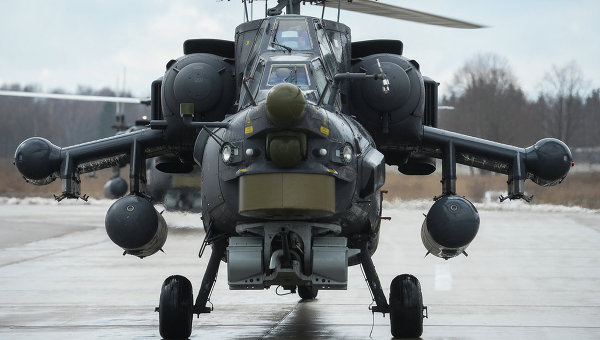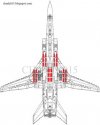Miragedriver
Brigadier
Russia's Lethal Yak-130 Fighter: The Tiny Terror NATO Should Fear

In the world of Russian jet fighters, Moscow’s finest — such as the Flanker and the fifth-generation Sukhoi T-50 — tend to grab the most headlines.
But the Yakovlev Yak-130, a comparatively non-glamorous twin-seat jet trainer, is quietly turning heads … because it’s obviously more than just a trainer. The twin-engine jet dubbed “Mitten” by Western intelligence is now showing its credentials as a genuine multi-role fighter.
When an air force wants to maximize its combat potential, a trainer — even a jet-powered one — might not be the most obvious choice of aircraft.
But today’s multi-role combat trainers are a viable and comparatively low-cost alternative to conventional fighters — even one that originates from behind the former Iron Curtain.
Like many post-Soviet military projects, it took a long time before any pilots got their hands on the Yak-130. But now the aircraft is showing up at the Russian air force’s advanced flight training schools.
Further, the Kremlin has to Belarus, a close military ally of Moscow. Previously, the Kremlin delivered Yak-130s , another established customer of Russian-made warplanes.
The Yak-130 has three hard-points under each wing. That means it can carry up to three tons of air-to-air missiles, air-to-surface missiles, precision-guided bombs, free-fall bombs, rockets, gun pods and external fuel tanks.
Another two stations at the wingtips can carry air-to-air missiles or decoy launchers to spoof enemy heat-seeking missiles. That’s not at all. Under its belly, the plane can carry a hard-hitting 23-millimeter cannon.
reveal the next stage in the Yak-130’s maturation to a combat aircraft. In the photos, a Yak wearing the latest Russian military markings has a characteristic “bump” in front of the cockpit. This could house the LD-130 laser rangefinder and TV camera for identifying targets and improving the accuracy of its weapons.
Another option for a future upgrade is a flight refueling probe, which would expand the jet’s range for offensive missions.
A fully armed and fueled Yak-130 tips the scales at 22,700 pounds. That’s only a little more than half the weight of a fully-loaded F-16 Fighting Falcon, the primary multi-role fighter of the U.S. Air Force and many of its allies.
Hang two 500-pound bombs, a gun pod and a pair of fuel tanks on a Yak-130 and it will have a maximum operational radius of 367 nautical miles. That’s fairly respectable compared to the F-16, which will haul two 2,000-pound bombs, two AIM-9 Sidewinders and a pair of external fuel tanks over a radius of 740 nautical miles.
The subsonic Yak-130 belongs to a class of aircraft known as lead-in fighter trainers — or LIFTs. For a modern-day air force, LIFTs allow student pilots to familiarize themselves with the advanced technology they’ll encounter once strapped into a front-line fighter’s cockpit.
Link:
Back to bottling my Grenache

In the world of Russian jet fighters, Moscow’s finest — such as the Flanker and the fifth-generation Sukhoi T-50 — tend to grab the most headlines.
But the Yakovlev Yak-130, a comparatively non-glamorous twin-seat jet trainer, is quietly turning heads … because it’s obviously more than just a trainer. The twin-engine jet dubbed “Mitten” by Western intelligence is now showing its credentials as a genuine multi-role fighter.
When an air force wants to maximize its combat potential, a trainer — even a jet-powered one — might not be the most obvious choice of aircraft.
But today’s multi-role combat trainers are a viable and comparatively low-cost alternative to conventional fighters — even one that originates from behind the former Iron Curtain.
Like many post-Soviet military projects, it took a long time before any pilots got their hands on the Yak-130. But now the aircraft is showing up at the Russian air force’s advanced flight training schools.
Further, the Kremlin has to Belarus, a close military ally of Moscow. Previously, the Kremlin delivered Yak-130s , another established customer of Russian-made warplanes.
The Yak-130 has three hard-points under each wing. That means it can carry up to three tons of air-to-air missiles, air-to-surface missiles, precision-guided bombs, free-fall bombs, rockets, gun pods and external fuel tanks.
Another two stations at the wingtips can carry air-to-air missiles or decoy launchers to spoof enemy heat-seeking missiles. That’s not at all. Under its belly, the plane can carry a hard-hitting 23-millimeter cannon.
reveal the next stage in the Yak-130’s maturation to a combat aircraft. In the photos, a Yak wearing the latest Russian military markings has a characteristic “bump” in front of the cockpit. This could house the LD-130 laser rangefinder and TV camera for identifying targets and improving the accuracy of its weapons.
Another option for a future upgrade is a flight refueling probe, which would expand the jet’s range for offensive missions.
A fully armed and fueled Yak-130 tips the scales at 22,700 pounds. That’s only a little more than half the weight of a fully-loaded F-16 Fighting Falcon, the primary multi-role fighter of the U.S. Air Force and many of its allies.
Hang two 500-pound bombs, a gun pod and a pair of fuel tanks on a Yak-130 and it will have a maximum operational radius of 367 nautical miles. That’s fairly respectable compared to the F-16, which will haul two 2,000-pound bombs, two AIM-9 Sidewinders and a pair of external fuel tanks over a radius of 740 nautical miles.
The subsonic Yak-130 belongs to a class of aircraft known as lead-in fighter trainers — or LIFTs. For a modern-day air force, LIFTs allow student pilots to familiarize themselves with the advanced technology they’ll encounter once strapped into a front-line fighter’s cockpit.
Link:
Back to bottling my Grenache




